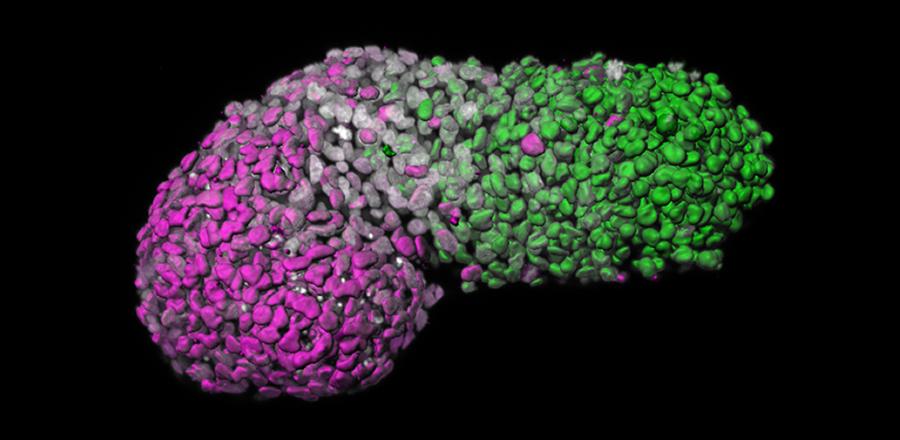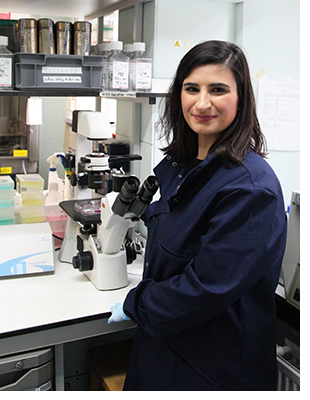
Submitted by Christina Rozeik on Fri, 26/06/2020 - 16:05
Scientists from the University of Cambridge, in collaboration with the Hubrecht Institute in The Netherlands, have developed a new model to study an early stage of human development using human embryonic stem cells.
Published recently in the journal Nature, the report describes a method of using human embryonic stem cells to generate a three-dimensional assembly of cells, called gastruloids, which differentiate into three layers organised in a manner that resembles the early human body plan.
The model resembles some key elements of an embryo at around 18-21 days old and allows the researchers to observe the processes underlying the formation of the human body plan never directly observed before. Understanding these processes holds potential to reveal the causes of human birth defects and diseases, and to develop tests for these in pregnant women.
To make gastruloids in the lab, defined numbers of human embryonic stem cells were placed in small wells, where they formed tight aggregates. After treatment with chemical signals, the gastruloids were seen to lengthen along a head to tail axis, known as the anteroposterior axis, turning on genes in specific patterns along this axis that reflect elements of a mammalian body plan.
Gastruloids do not have the potential to develop into a fully-formed embryo. They do not have brain cells or any of the tissues needed for implantation in the womb. This means they would never be able to progress past the very early stages of development, and therefore conform to current ethical standards.
“This is a hugely exciting new model system, which will allow us to reveal and probe the processes of early human embryonic development in the lab for the first time,” said Dr Naomi Moris, the first author of the paper and a member of the Reproduction SRI. “Our system is a first step towards modelling the emergence of the human body plan, and could prove useful for studying what happens when things go wrong, such as in birth defects.”
Naomi Moris, Kerim Anlas, Susanne C. van den Brink, Anna Alemany, Julia Schröder, Sabitri Ghimire, Tina Balayo, Alexander van Oudenaarden and Alfonso Martinez Arias, ‘An in vitro model of early anteroposterior organization during human development’, Nature 582: 410–415 (2020). DOI: https://doi.org/10.1038/s41586-020-2383-9.
Full story: https://www.cam.ac.uk/stories/human-embryo-like-model-from-human-stem-cells
Top image: Image analysis of human gastruloid showing ‘anteroposterior’ patterning. Green is the posterior part, similar to the tail-end of an embryo; magenta is the anterior part, similar to developing heart cells; grey marks DNA (courtesy of Naomi Moris).
Lower image: Dr Naomi Moris in her lab in the Department of Genetics (University of Cambridge).


